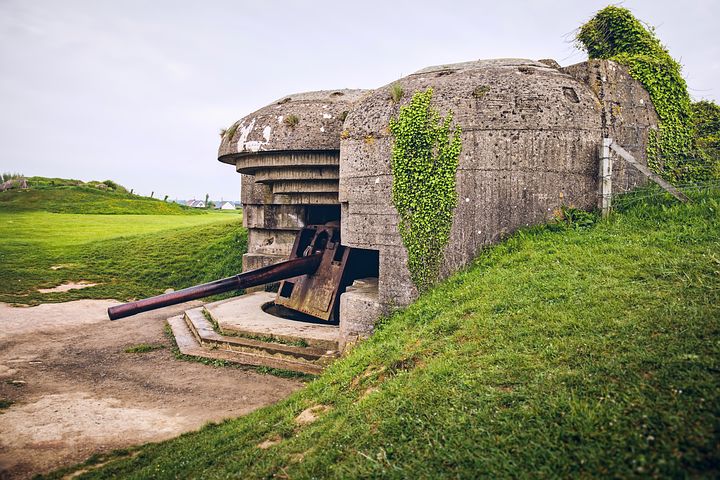What we today know as Scandinavia has been time tested through some of the most troubling happenings in the past. One of such tumultuous historical realities is the Second World War that wrecked great havoc throughout the region. Today, you walk through the West coast of Jutland, Denmark in places like bunkers in Søndervig, Hurup Thy and all across the country, the evidence is well tucked there. These wreckages that reminds of the wartime period also exist in other Scandinavian countries. In fact these places today mostly act as tourist attractions and provide a clear legacy of the Second World War.
Also check out something about the best time to visit Scandinavia.
The legacy of Second World war in Scandinavia
There has never existed a scary dream in Scandinavia like the griming Second World War. To stave off the speculated disaster, none in Scandinavia had the will to participate in the warfare. As they did in the previous World War 1, was their wish to remain neutral in the new phase of World war. Through this article, you will get to know about the events that took place in Scandinavia during ww2.
In the case of Norway, it maintained its neutrality status in the First World War, and predictions had it to stay put. Alas! Things changed overnight, and it became so shocking beyond expectations. Before knowing it, the Nazi Germans attacked them together with the Danish.
The memoir’s most exciting part is Sweden’s neutral stand through Second World War. Although some refute Sweden’s stand due to its well-wish support to the warfare victims, it made a remarkable history in the WW2. Yet, in whichever paths they each took, the Scandinavian community celebrated the victory of WW2 on different dates.
German Invasion of Denmark Scandinavia during second world war
In the beginning, Denmark announced itself neutral to Second World War by 1939. However, being a German protectorate, the Berlin conference’s terms demanded its complete occupation. And so did German fulfil its dream on the morning of 9th April 1940.
Fighting back then could be dead on arrival, given its opponent’s military superiority. And what followed was a concession to cooperate with Germany. In return, the Nazis promised to be lenient and respectful to Danish neutrality.
But somehow, all seemed easier said than done for the Danes, who became vulnerable to the German’s harsh measures. An awakening call stirred tension as the younger Danes opted to resist the Nazis. And by 1943, the Danes reached the breaking point. An episode of sabotage to vandalize Germans properties took tall, but still, it never gone unseen by the Nazis.
How Germany Retaliated to the Dane’s Resistance
This phase of retaliation was much worse for the Danes than the initial invasion. Can you imagine the Nazis forcing Danish Government to deploy a curfew and kill the saboteurs! However, the Government pulled off a spectacular feat in refusing German’s demands. Then, they dissolved the Danes Government and created the so-called martial law. This is among the key events that took place in Scandinavia during the Second World War.
Over time and again, the Danish Jews had their Government to reckon with for protection against the Nazis. Things really turned south as expected. The Danish population, who were Jews, instantly became the target of torture by the devious Nazis. Without delay, the Jews went into hiding in Sweden, thanks to their pastime Viking skills. For records, 7000 Jews escaped the sharp jaws of the Nazis, and just 500 of them went into captivity at Theresienstadt in Czechoslovakia.
The Final Phase of German Invasion and Liberation for the Danes
Nothing lasts forever. Even though the warfare affected Danes, who lived in fear and lacked goods, it all ended in jubilation. The British radio nailed it for the best news of the year come 1945. As per the news, the German troops in Holland, Denmark, and North-West Germany surrendered.
Moreover, not that the Danes fought so well or deserved the credit for a well-done job, it was all we call fate. The undeniable truth for their retreat is that Germany lost control over most parts of Europe. This is one of the best events that took place during WW2. Who could have thought that Germany would be defeated?
A new day for celebration followed closely to mark a new beginning for the Danes. Happily, you could catch a glimpse of hanged-up posters of good vibes in readiness to receive the British troops. After the long days of agony, the Danes lit white candles in their homes as a sign of hope for the future.
One thing was for sure during this period, after more than five years of German occupation is that Danes could rule their country. Even though up to 562 Danish Jews died in the German prison camps, the rest who survived were way too many.
Invasion of the Soviets in Norway
Were it not for the help extended to Finland, perhaps today we couldn’t have something to record about Norway regarding WW2. Following the takeover of Finland by the Soviet Union, the close neighbours took the bold step to help. Neutral Sweden, together with Norway, volunteered to support their own.
Initially, the Norwegian government feared supporting Finland, given the fear that Germans could strike back. Besides, they wanted to honour neutrality as it was in Sweden. But as time passed, things changed, and somehow, both citizens and the government teamed up for the idea to brace Finland. In essence, things like food, supplies, ammunition, and artilleries were least an issue in Finland at such times.
For reasons like strategic hiding grounds, a safe route for iron ore transportation, and support to Finland, Norway fell into a trap. The unexpected storming of Germany shocked the unprepared Norwegian soldiers. The Germans then aimed to invade the Royal house and capture the king with his family, but they escaped in time. The reason for such an ambush being they wanted to coax the country to surrender.
In fear of brutal invasion, the soldier only relied on the British army to come to their rescue, which delayed too. Things changed from bad to worse. Germany relentlessly advanced its grip on Norway to the extent of completely withdrawing the British military. The defeated Norwegians had nothing to face other than succumb to the massive killing and wounding of many.
Appalling Encounter of Norwegians during the second world war
With all the horrific experiences, nothing could compare to the total occupation of Germany in Norway. The dreadful nightmare was shown when the German military seized everything they could lay a finger on right then. Be it personal wealth, schools, and even homes. All spread the Nazi symbolism.
What marked the darkest moment instead was the burning of Norwegian icons. It literally meant no singing of the national anthem, let alone raising the flag. Sadly, the urban areas were hit the hardest by the reforms, given the rationing of food, clothes, and other necessities. Just for laughs, even the beautiful flowerbeds turned into potato and vegetable gardens for lack of what to eat. It is when men and women seriously embarked on fishing and hunting pastimes.
Norwegian Decided to Resist Germans’ Oppression-A Call for Liberation in Norway
The inspirational fact about Norwegian remained that Hitler’s men killed and wounded many, but their zeal to resist never died. Both men and women formed underground activities to sabotage the Germans’ operation. Such movements were so secret that even family members only noticed their involvement after the warfare.
While some resisters blew up German ships, others destroyed their trains. The epic of all was the destruction of factories and the smuggling of goods from Sweden, which saw the total disruption of German trade. And by May 1945, Germany surrendered. Norway became free again and immediately took off to rebuild its merchant fleet. Surprisingly, 50,000 Norwegians were found guilty of betrayal against their own country. Out of the many, twenty-five of them were executed for treason crimes.
Debates about Sweden’s Neutrality in the WW2
During WW2, Sweden declared a policy of non-belligerency. This meant that it was detached from either Axis or allied powers. However, one or two of its operations and involvement in warfare became questionable, like in the case of Finland’s invasion by the Soviets. This is among the notable key events in Scandinavia during WW2. During this period, not only did they volunteer individually, but the government also offered both food and armaments.
Another one is Sweden became the hideout for thousands of Danish Jews who sort refuge in the country to escape the Nazi’s pursuit. Additionally is the long-standing iron ore trade between Sweden and Germany. For a long time, Germany depended on iron ore from Sweden, something the government authorized.
Even so, Sweden helped the Allied power militarily. It trained its soldiers and allowed the use of Swedish airbuses in the war. So from a keen look at all these, Sweden appeared weak than neutral, according to Arne Ruth. And for some reason, Winston Churchill believed that Sweden “ignored the greater moral issues of the war and played both sides for profit.” Therefore, the above discussed events were key in Scandinavia during the WW2






